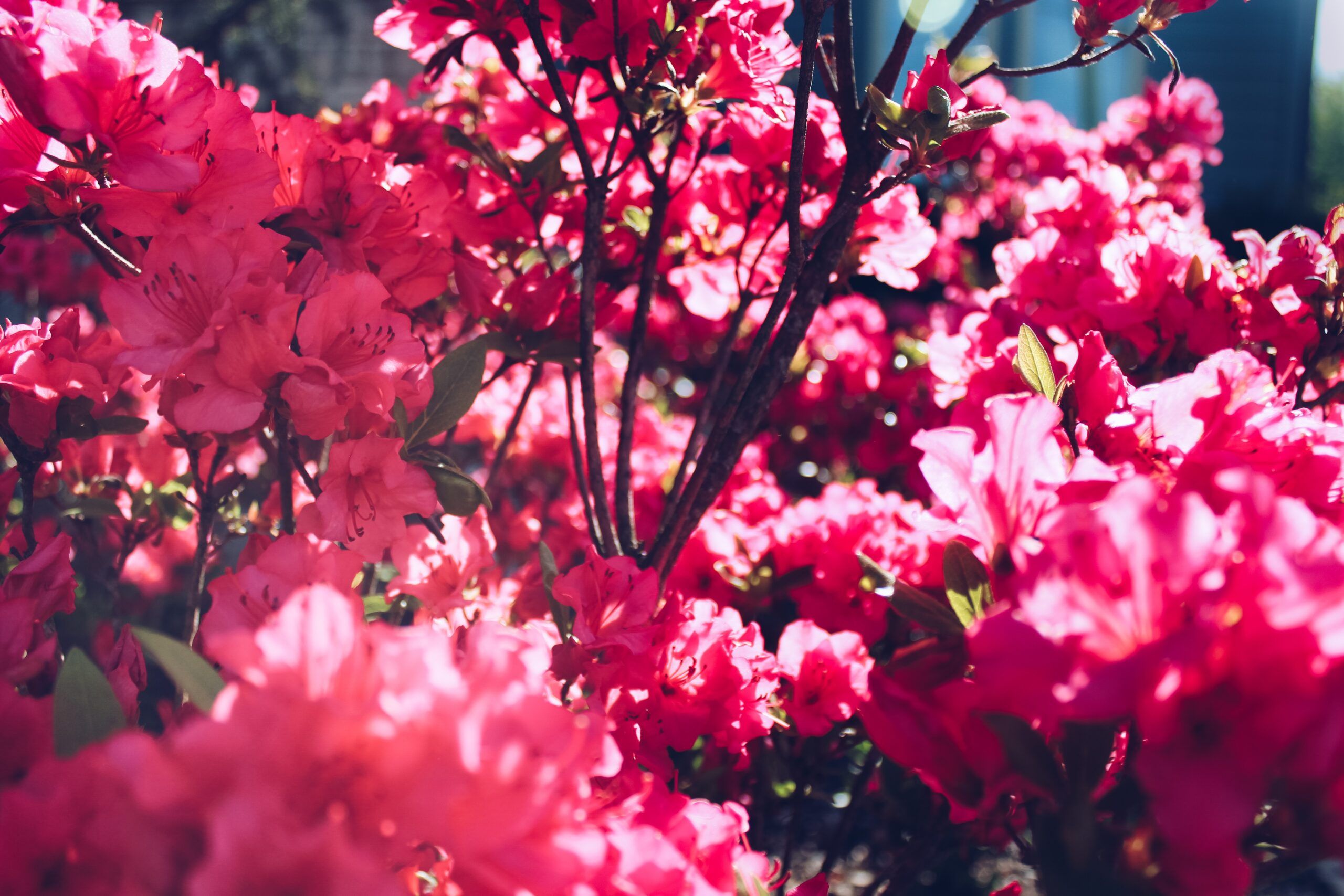Azalea
From the genus of Rhododendron and the family of Ericaceae, Azaleas are flowering shrubs. These shrubs are native to Northern America and are seen in full bloom in the spring months of May and June. Azaleas are shade tolerant, and they prefer living near or under trees.
Dieback/Flagging
The common symptoms of an Azalea’s dieback are progressive death of twigs and branches. However, dieback is usually the result of insects or diseases.
The diseases that cause dieback in azaleas are two types of fungal diseases: botryosphaeria and phytophthora. Phytophthora is generally fatal, and the symptoms include leaves that go from pale green to yellow to brown, prematurely falling leaves and dieback. Botryosphaeria is a common azalea fungus, causing the branches to die, and leaves on the affected branches turn dark and roll up but do not fall off.
The insects that can cause dieback are the rhododendron borer and the rhododendron stem borer, two boring pests. Both pests prefer rhododendrons but are known to infest azaleas.
Moldy Leaves
Azalea moldy leaves are often caused by:
- Aphids
- Cottony Azalea Scale
- Azalea Bark Scale
- Whitefly
Wilting
A primary cause of wilting is Phytophthora rot.
Azaleas can wilt due to drought and improper watering. If an azalea lacks water, either because of improper watering or a drought, the flowers and leaves will curl up and turn brown.
Yellowing/Browing
Azalea yellowing/browning is often caused by:
- Azalea Rust
- Cottony Azalea Scale
- Azalea Bark Scale



